Many of you have asked us if there is anything else to do and see in or around Agra, other than the Taj Mahal. The answer is YES but you need to spend a couple of nights at minimum to discover some of these attractions. Let no guidebook or guide tell you otherwise. Agra and it’s neighboring areas have a wealth of experiences for everyone.
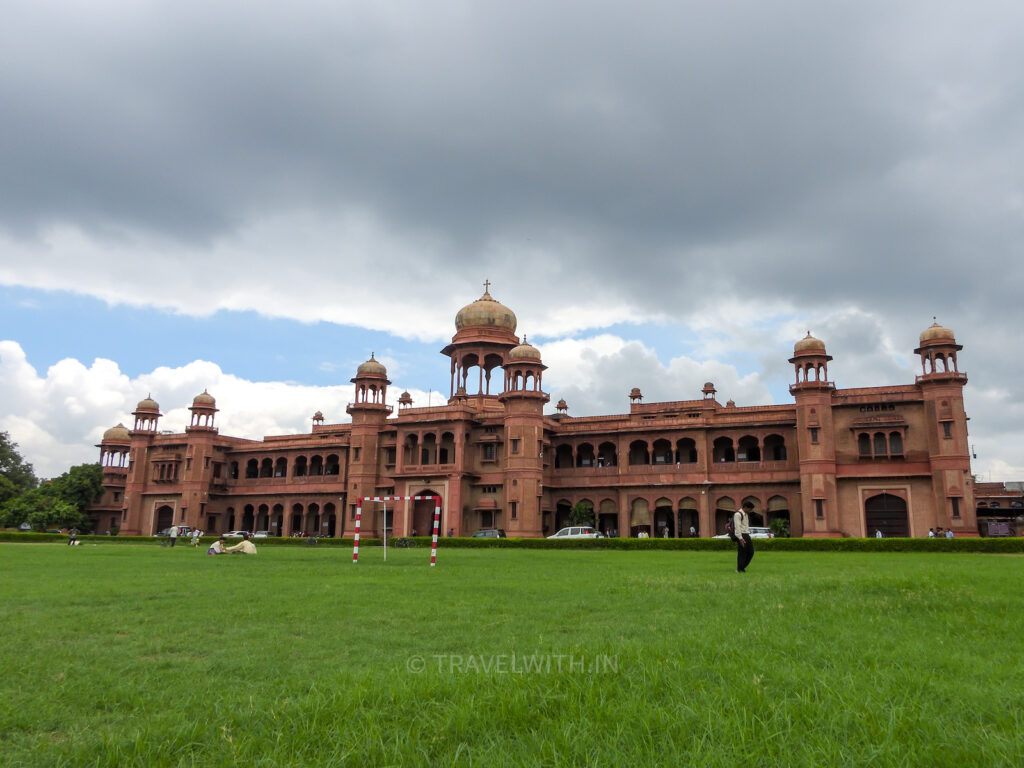
Colonial Walk – St. John’s College in Agra
In general, the meeting point for the below attractions and tours will be a major landmark in Agra. From Agra, someone from our team will accompany you to these attractions. It is recommended to bring your own transportation to/from Agra as there is no reliable public transportation to some of the below attractions that are outside the city. We can also arrange a taxi for you from one of our reliable transportation vendors.
If this is your first time to Agra then we can arrange a licensed and experienced guide (known to us and one who does not waste your time taking you to shops) for the Taj Mahal, Agra Fort and other monuments/walks. We can also arrange a guided view of the Taj Mahal from our secret spots on a full moon night. Most visitors buy the tickets for the full moon night but are sorely disappointed when they find out that it is a rushed affair and that you’re not allowed to take any photos even with your mobile phones.
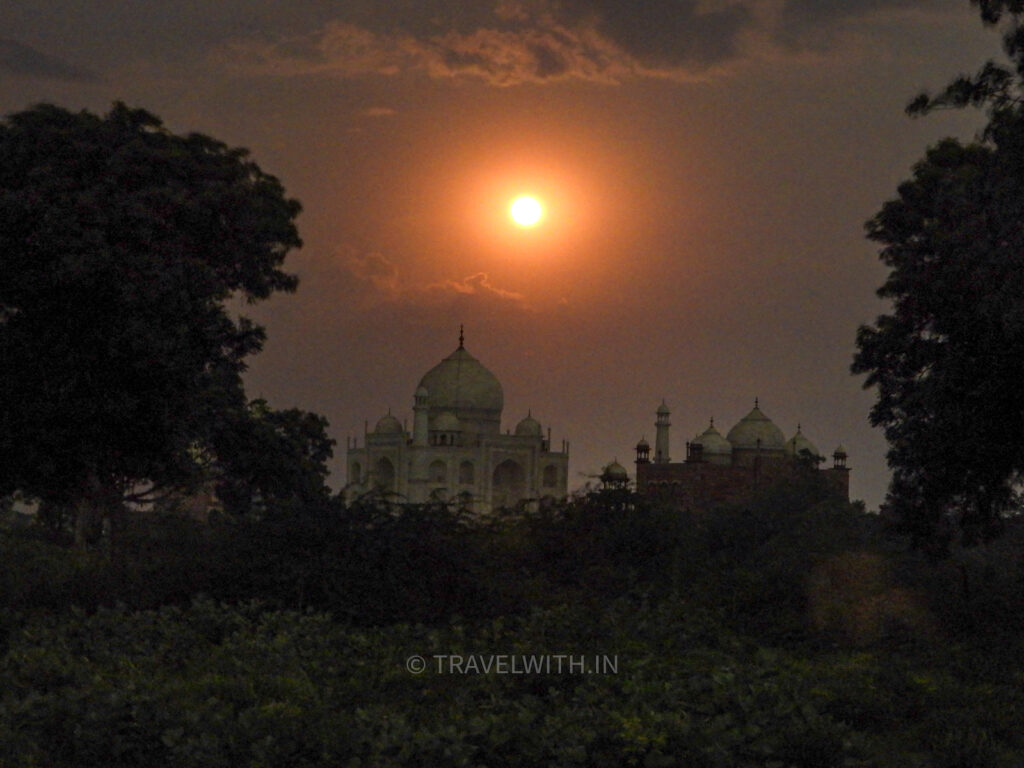
Taj Mahal as seen during the Blood Moon July 2022
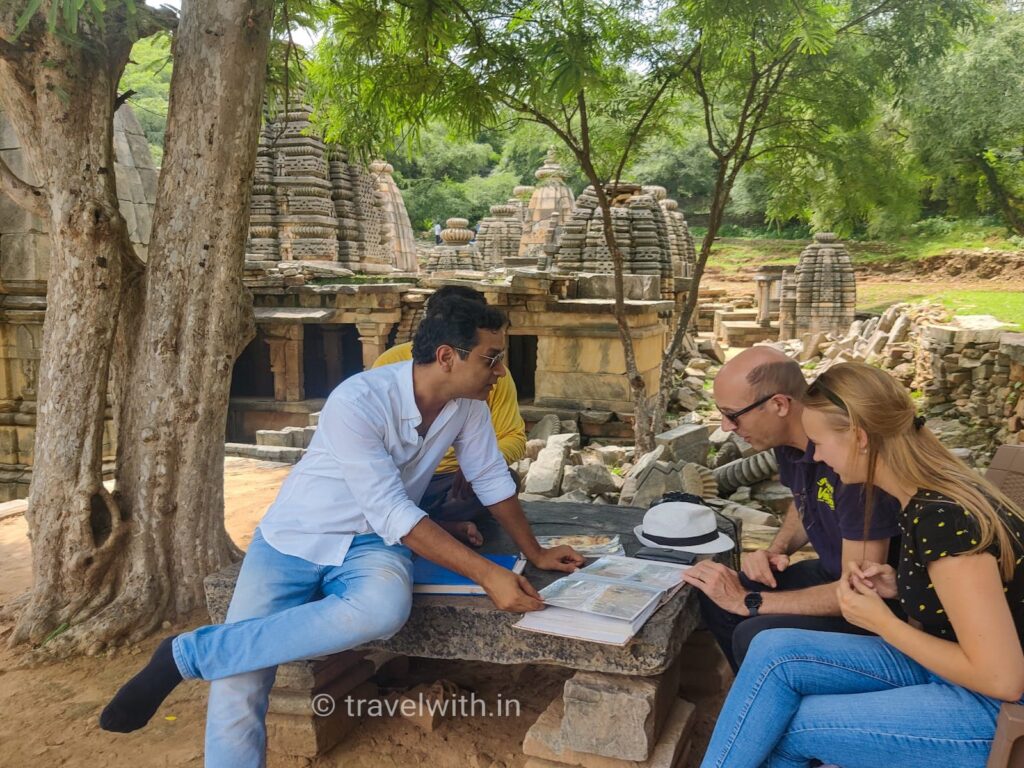
Guided tour of Bateshwara Temples near Morena
Bateshwara Temples – Morena
The Bateshwara Temples in Morena include Garhi Padhavali and Mitawali all within a few kilometers drive from each other. The temples are on the way to Gwalior and mostly devoid of mass tourism. Restoration work on the temples was initiated between 2005 to 2015 by the Archaeological Survey of India (ASI) after some initial hurdles which included a truce with the then dacoits (bandits) who lived in the region. As you can see from the photos below, architecturally these (some are 1200+ year old) temples are outstanding and the finest that you will get to see in your travels in this part of the country.
Bateshwara Temples are a group of 200+ temples dedicated to Hindu Gods – Vishnu and Shiva. Some temples appear to have been destroyed by invading armies and others have fallen due to earthquakes (or due to blasts for stone mining). The antiquity and isolation of these temples reminds many of the temples in Siem Reap in Cambodia. According to archaeologists, there are 100 temples scattered all around the area that are yet to be excavated and restored. It is also difficult to give a precise date of construction of these temples as no records have been maintained. We can only assume when they were built by comparing their design to other temples made in the region by Gujjar Pratihara and the Kachchhapaghata dynasties.
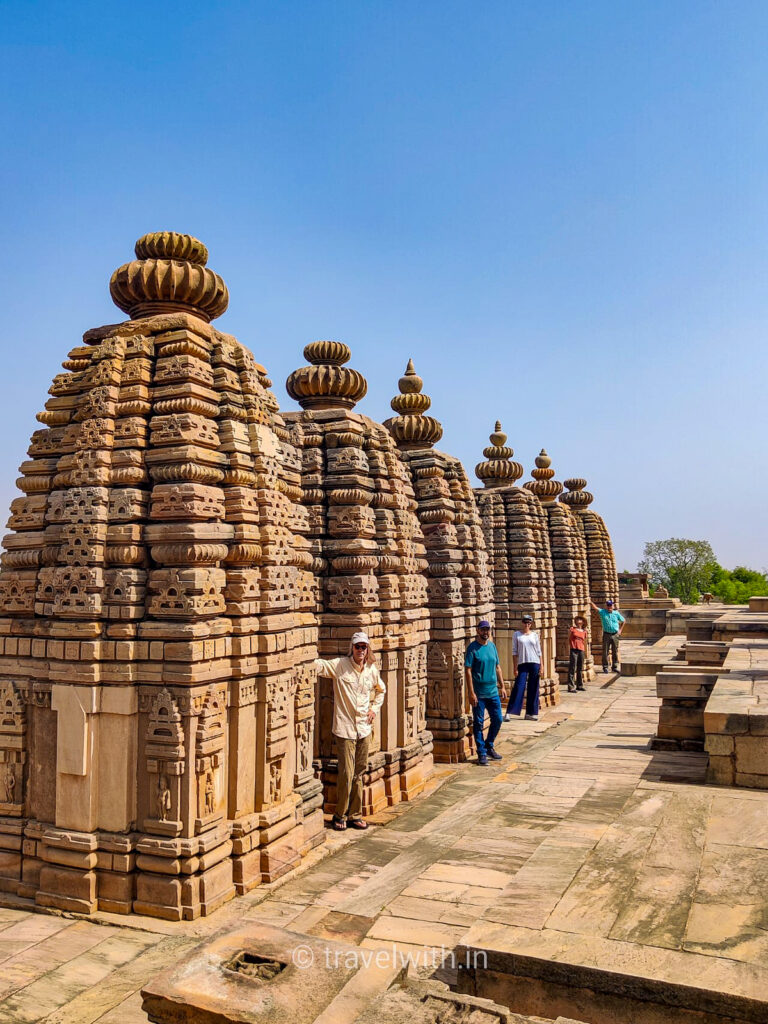
1400 year old temples near Morena
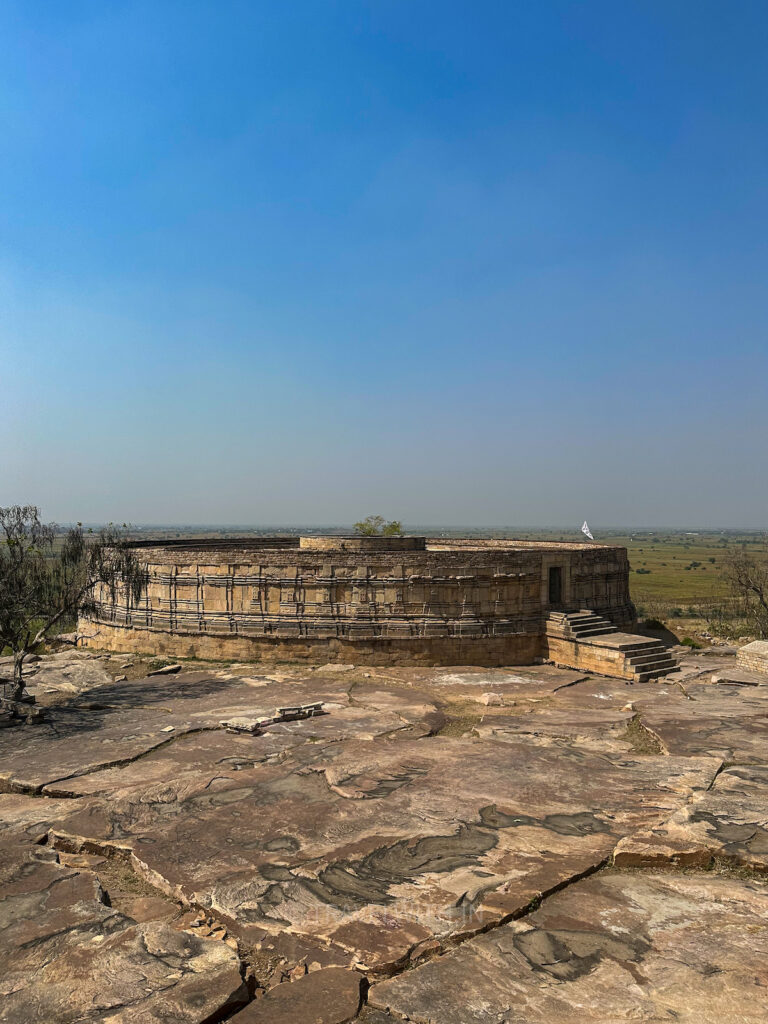
Mitavali Temple inspired the design of the old Parliament House in Delhi
Mitawali temple is situated on top of a hill. You need to be fit to walk about a 100 steps and unfortunately there is no ramp for people with mobility issues. This temple is a fine example of a chausath (64) yogini (attendant to a female goddess) temple and is said to have inspired the construction of the old Parliament House in New Delhi. The statues of the 64 yoginis in the temple are long gone but you are nevertheless bound to be amazed by the unique temple architecture.
Padawali or Garhi Padavali is actually a fortress (built in the 18th century) that was constructed around a Shiva temple – the main temple and it’s remaining mandap which was built much before the fortress was. The inscriptions and intricate details cover every inch of the mandap and are stunning, still intact and pictorially narrate several stories from Indian mythology. There are also some statues in the mandap that depict erotic art similar to ones in the temples of Khajuraho and then there are statues of people on horseback playing what appears to be the game of Polo. When we take you to these places, we will be sure to help you spot these and many other details that go amiss by most visitors.
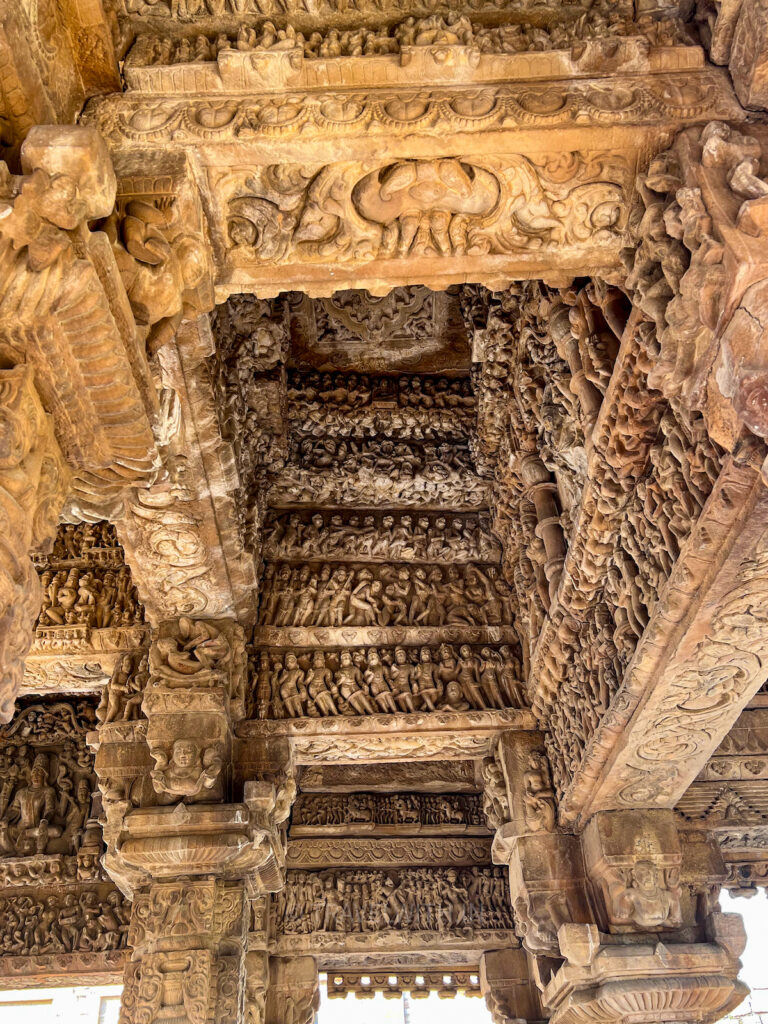
Garhi Padawali temple
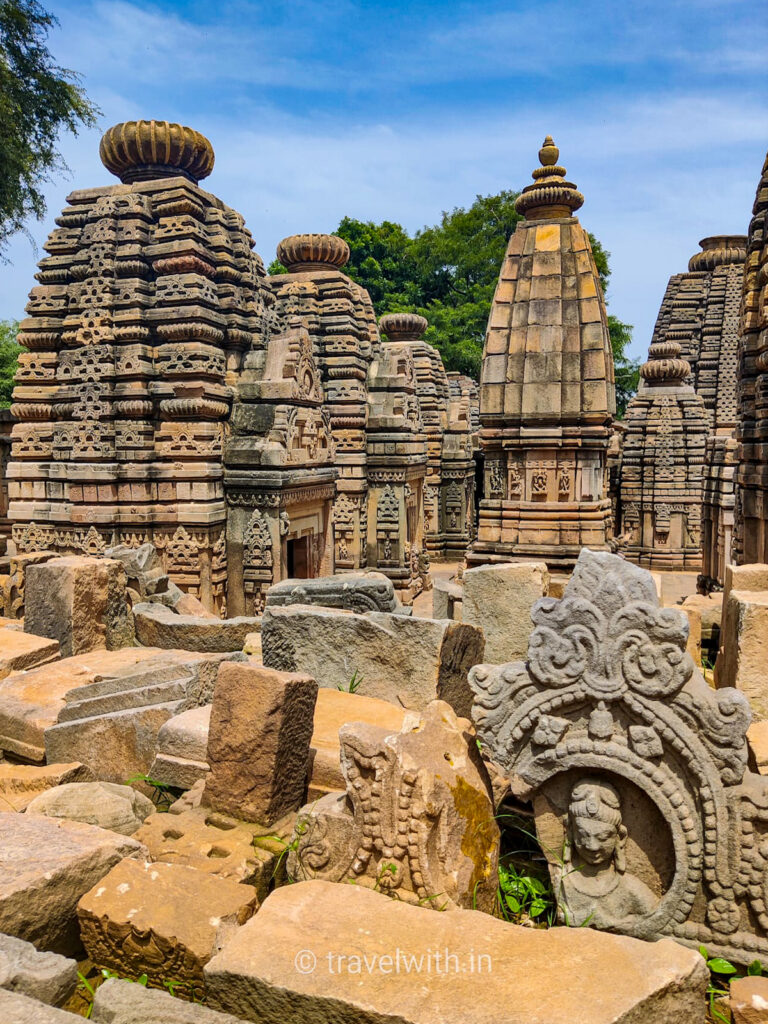
ASI protected temple and ruins of Bateshwara near Morena
To get to these places you need to organize your own transport, we wouldn’t recommend public transport as it is unreliable/non-existent. We can also arrange a taxi for you if you like. Best to visit during daylight hours and carry water and food as there is nothing hygienic on the highway. Your base should be Agra as there are plenty of hotels to chose from. This experience is in rural and remote India, please do not expect ‘luxury’ tourist facilities here. Sometimes, road conditions are bad, especially after monsoon season or there are traffic jams or other unexpected road blocks. On occasion, the toilets at these temples may be closed and you have no choice but to go in the wilderness.
Therefore, it is essential that you maintain a calm, flexible mindset and patience is key when such unexpected circumstances pop up. These ancient temples and ruins are most certainly astonishing and hopefully you will forget the pains it took you to get here. It is also recommended for women to dress conservatively when traveling to these places.
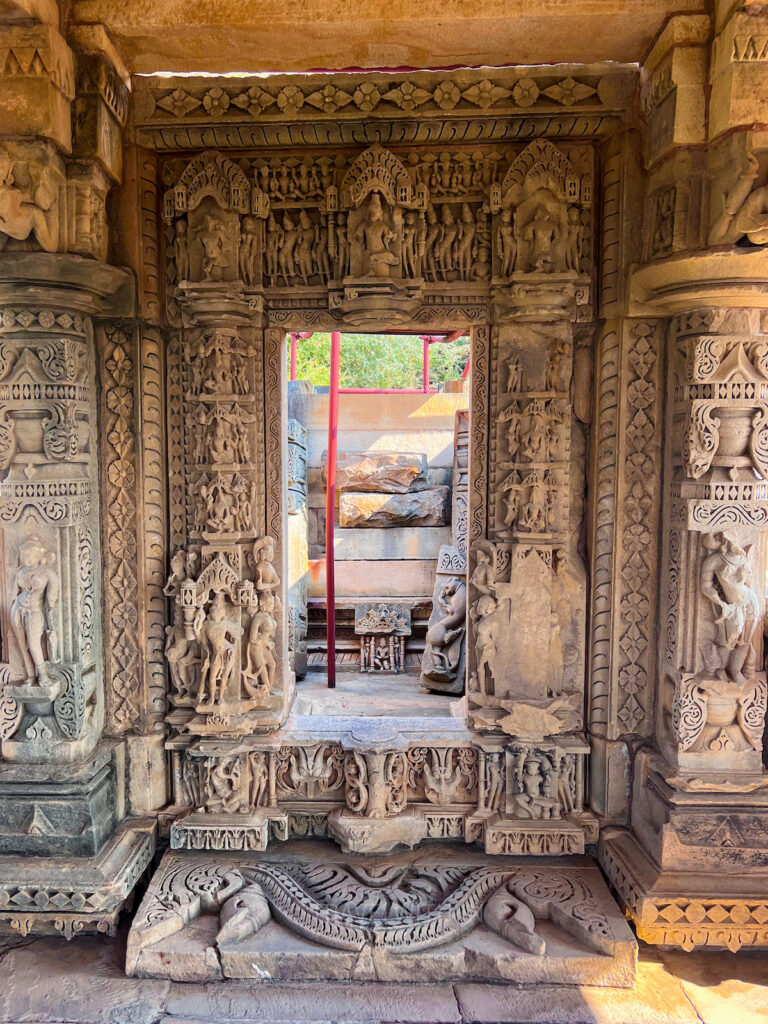
Vishnu Temple in Bateshwar near Morena
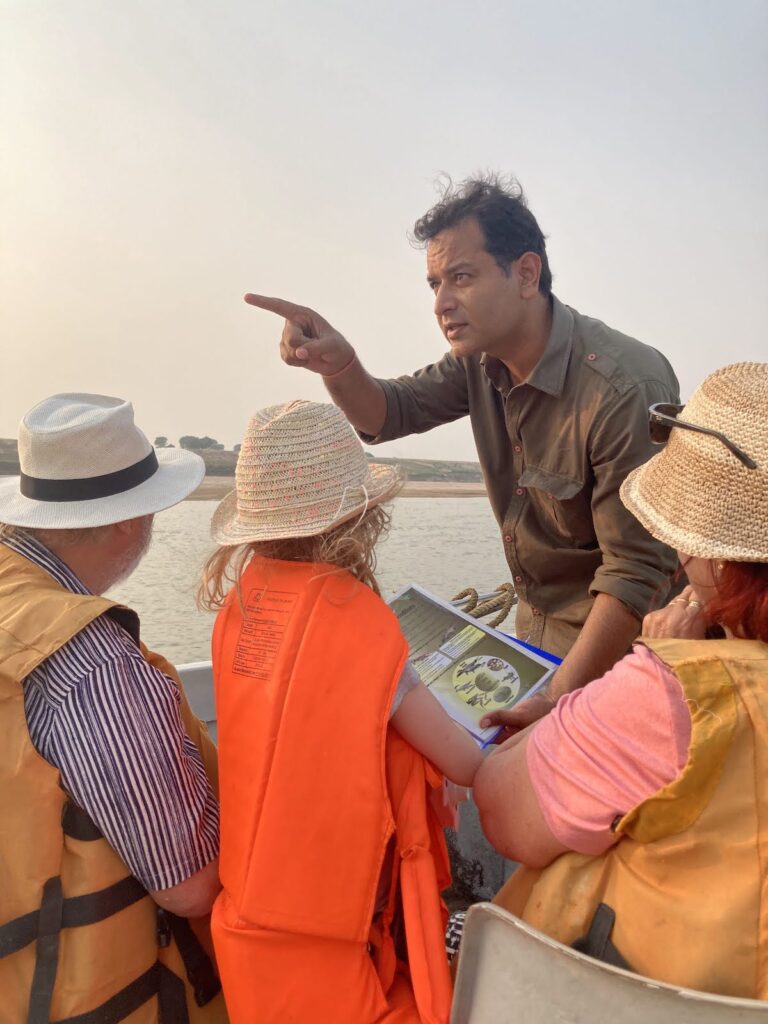
Chambal River Safari with Kunal Jain as your naturalist
Chambal River Safari
Another must do when in Agra is the river safari on the Chambal with our team of naturalists. The river safari is safe and there have been no incidents of crocodile attacks on the boat. As a matter of fact, reptiles and other wildlife are scared of the boat and usually dive back in to the water when they see it approach. During the river safari we can spot marsh crocodiles, the critically endangered Gharial, turtles (two of which are now found nowhere else but the Chambal river) and migratory birds including the Indian Skimmer and Black-bellied Tern. More about this experience here.
If you are lucky you may spot a Desert Fox, Striped Hyena, Jackal, Jungle Cat and the rare Gangetic River Dolphin. For the enthusiast we recommend you do the safari for at least two hours. If you’re a wildlife photographer then longer duration safaris are recommended and we can even take you to both parts of the river near Agra from where you can do the river safari. The safari is best done from mid October to mid April. Mid April onwards it get’s very hot but can be also very rewarding as you get to see several species of birds nesting on the sand banks. The river safaris do not operate from 15 June to 30 October.
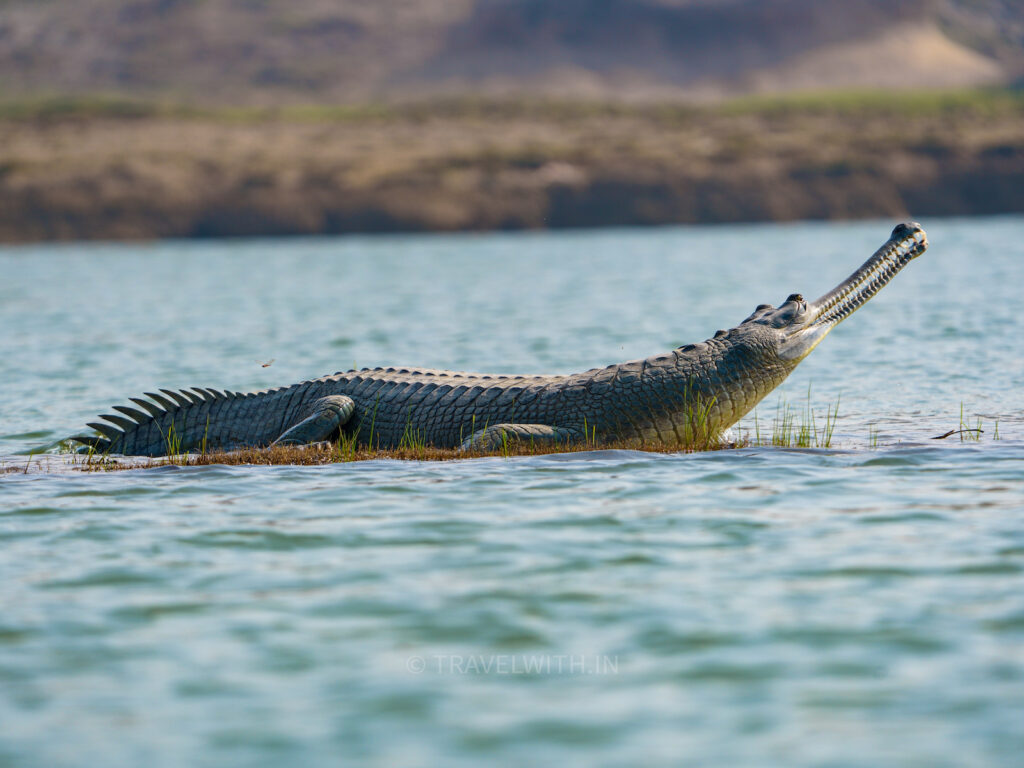
Female Gharial on the Chambal River
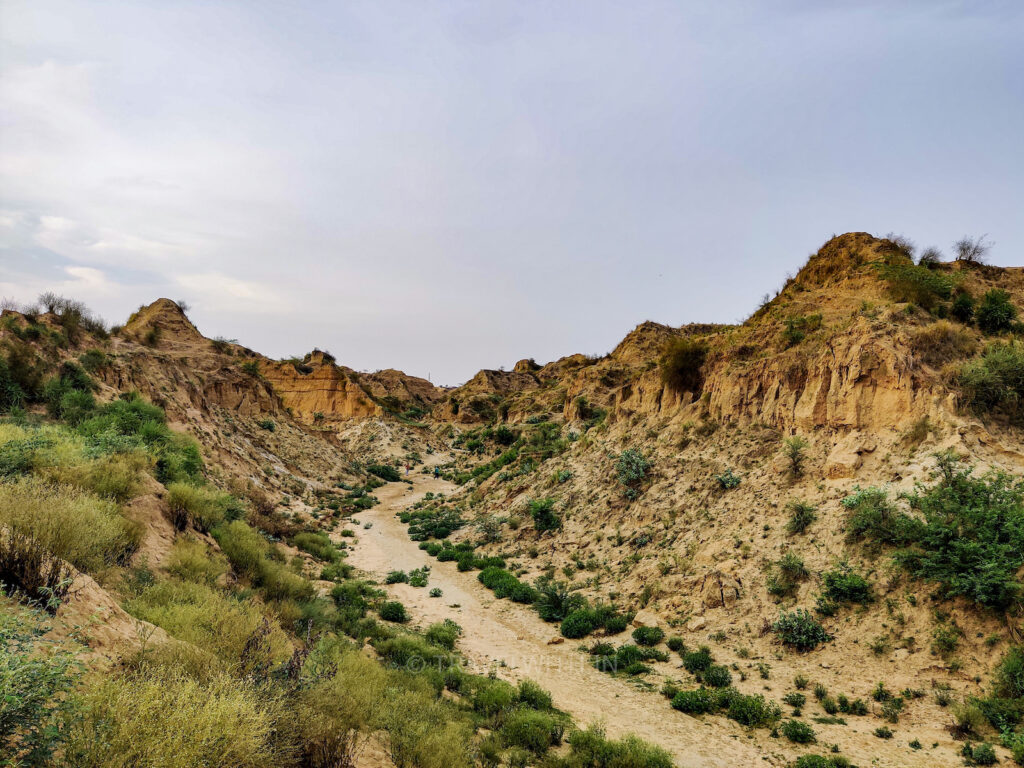
Chambal Ravine Walk
Chambal Ravine Walk
Yes, it is safe to walk in the ravines (during the day) provided you are with a reliable local or someone who knows the ravines. Now, that we have answered the most important question, let’s talk about the ravines and the walk itself. The Chambal ravines or ‘beehad’ as we call them in Hindi are deep mud moulds formed over thousands (if not more) of years due to soil erosion. During the monsoon, heavy rainfall erodes the soft top soil and rainwater forms a network of criss crossing gullies till it reaches the Chambal river.
Over time, some of these gullies have become wide enough for animals and people to walk through them. The resulting ravines have became very deep and if you enter them unguided or unless you have an aerial view which gives you a sense of direction on where to go OR if you have on point navigation skills like Bear Grylls, you’re bound to get lost.
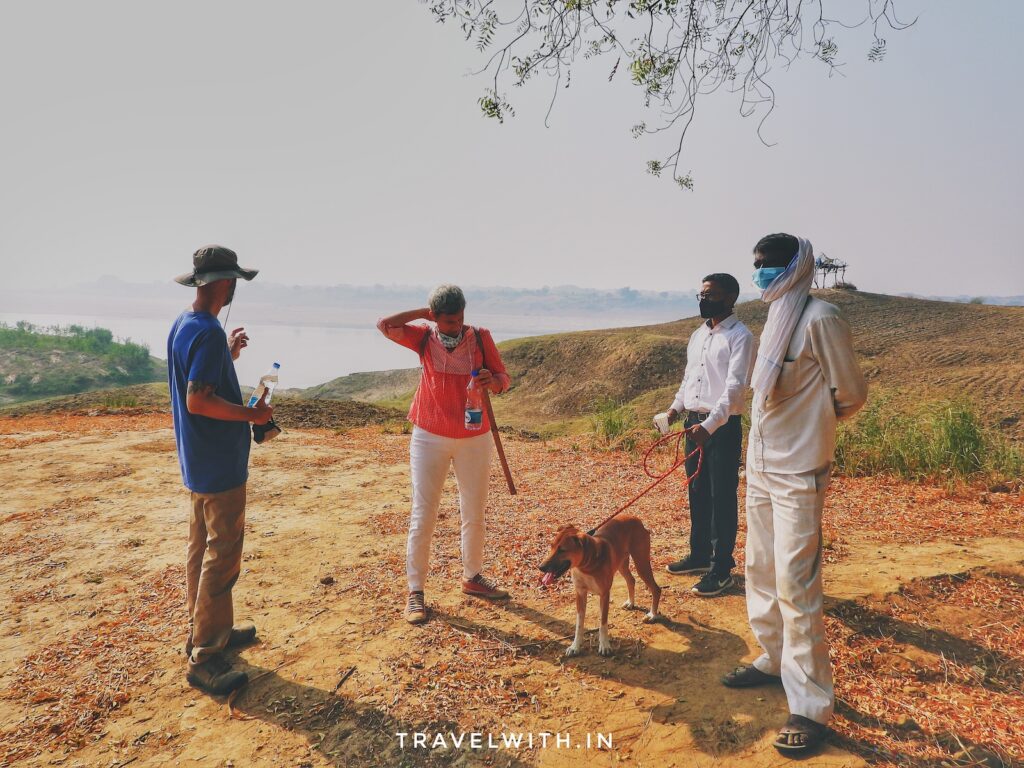
Chambal Ravine Walk with guests
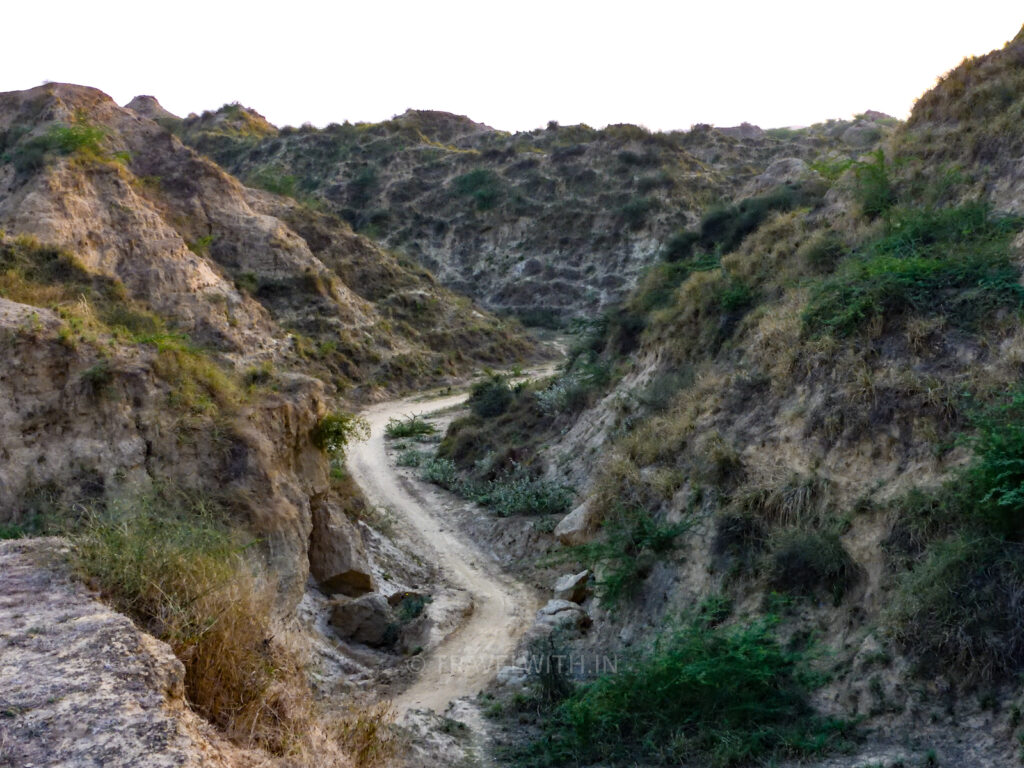
Chambal ravines home of legendary dacoits
Little was known of the Chambal ravines till the 1990s, more is yet to be studied and researched. The region was home to several outlaws, dacoits or bandits. Some of the most famous dacoits included Phoolan Devi (there were other powerful women dacoits too – see the movie Bandit Queen), Seema Parihar, Nirbhay Gujjar, Man Singh and Pan Singh Tomar. These people and their posse lived in these ravines like Robin Hood and used them as a sanctuary from the ‘outside world’. Even cops couldn’t find a way to get to them once the dacoits entered the ravines. Some say, treasure looted by the dacoits is still buried in the ravines. During our walk we use the very same trails that were once used by dacoits.
We hope through this walk you get to discover a mysterious yet historic eco-system, one that was most feared and talked about for decades in India. Many stories and movies have been written about the bandits and their ravines. With the bandits gone, local farmers are beginning to flatten these ravines and make them conducive to agriculture. We are not sure that this is a good idea as these ravines serve as a natural barrier against the Chambal river when it floods and is also home to a number of species who will vanish if the ravines are destroyed.
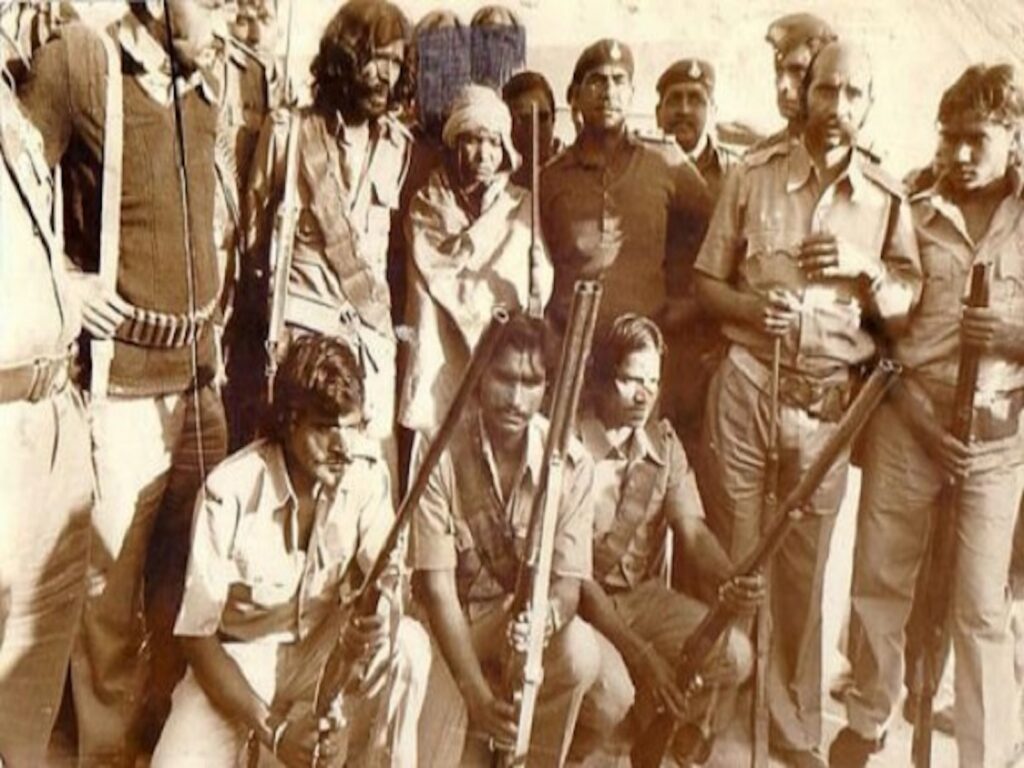
The Bandit Queen – Phoolan Devi (Source: Internet)
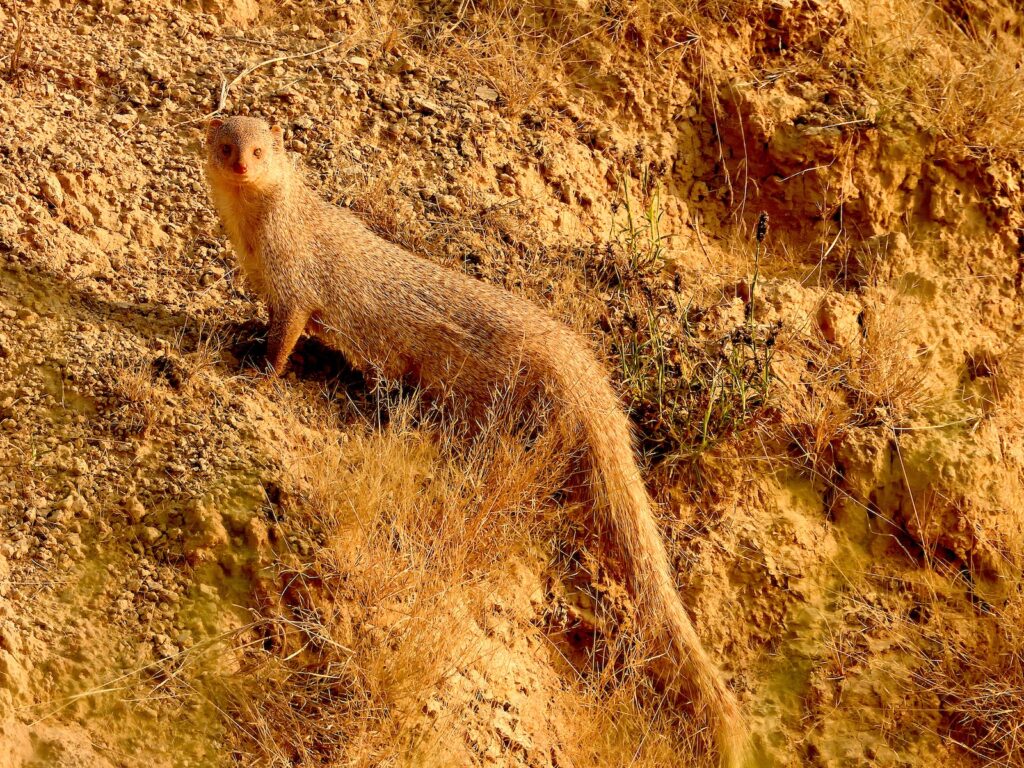
Indian Mongoose during a ravine walk
During the walk we may see wildlife such as birds of prey, Indian hare, mongoose, jackal, perhaps even a striped hyena or a jungle cat. We have heard there are caracals and pangolins too but have yet to spot them. If one of our trails takes us close to the Chambal river, we might even chance upon the aquatic wildlife by the riverbank. The terrain is partly uphill and scrubby with Prosopis Julifora and other shrubs. Wear pants, full sleeved shirts and walking shoes, a cap, sun glasses and water. Please travel light. Our ravine walks can be customized to your fitness level and could end with a picnic where we can have light refreshments overlooking the Chambal river.
Chambal Heritage Villages
Within two hours from the city of the Taj are villages hidden from the highways and surrounded by dense forests. Some of these villages have no signboards or milestones. As if time had forgotten them and does not want them rediscovered. As you approach these villages you will see from a distance towering mansions or havelis built by landlords in the early 19th century. Many of the owners of these mansions were Brahmins and pundits who migrated from Mathura and other parts of the Braj (present day Mathura and Vrindavan) and settled down in these ravines after they were assured of protection by the Bhadauria rajput kings who ruled the Chambal valley for centuries.
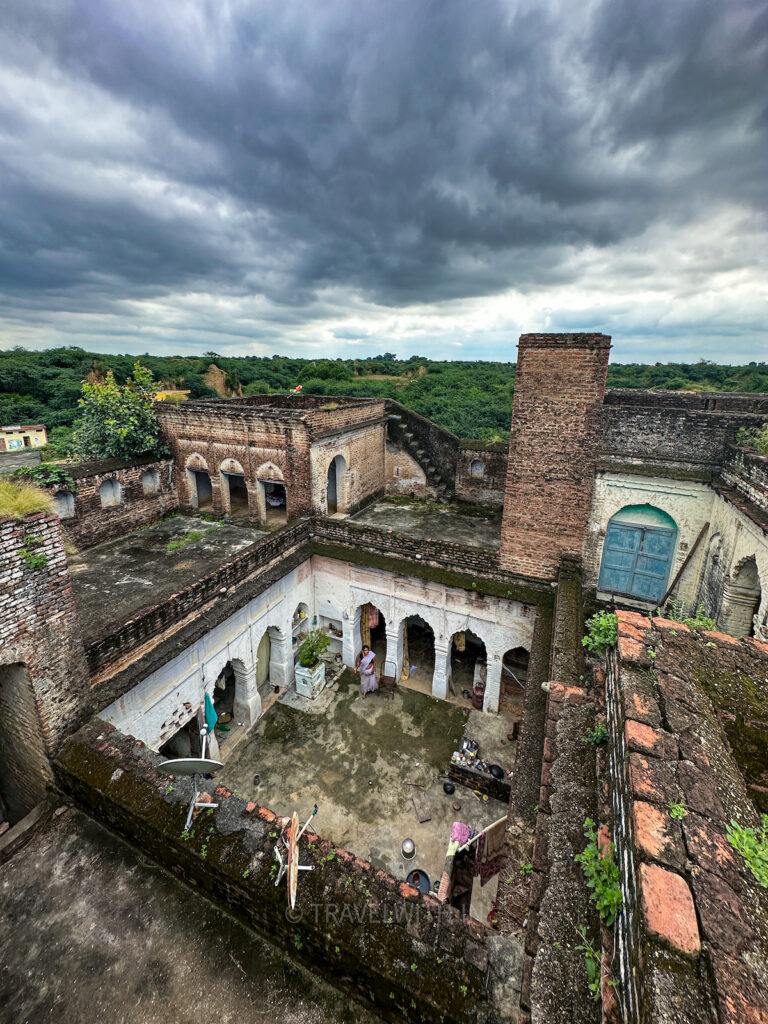
Havelis in a Chambal Heritage Village
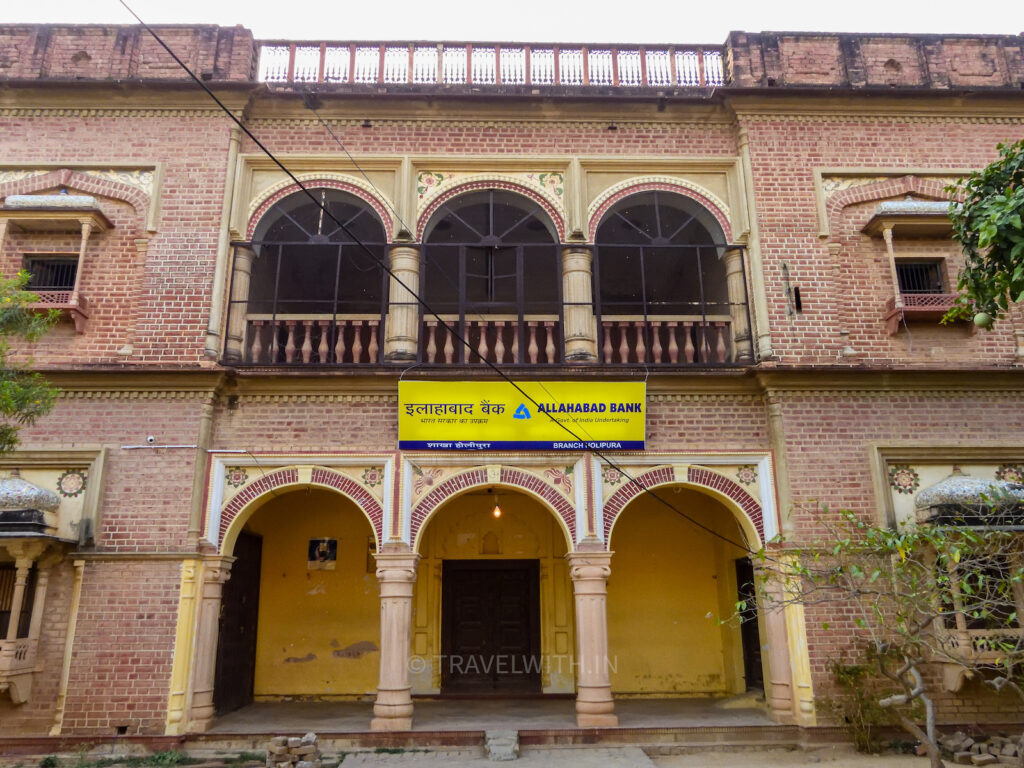
Once a haveli now a bank
Over time these Brahmins gradually moved away from land ownership and agriculture and sent their children to cities so that they could get proper education and find work there. Today, many of the descendants of these villages have become very successful notably in the government services across India. Although educated and very successful, many have not sold their ancestral havelis and to this day visit at least once a year which is usually around the time of Diwali or Holi. However, not all havelis have fared well. Some have dilapidated and fallen apart over time, others have caretakers living in them and then there are some which have been locked up with the owners either living in Agra, Delhi and elsewhere.
During the tour, if the owners of the havelis are there we will request them to give us a personal tour of their grand home and talk to us about what life was like back then and where they see the future going for these hidden villages of the Chambal valley.
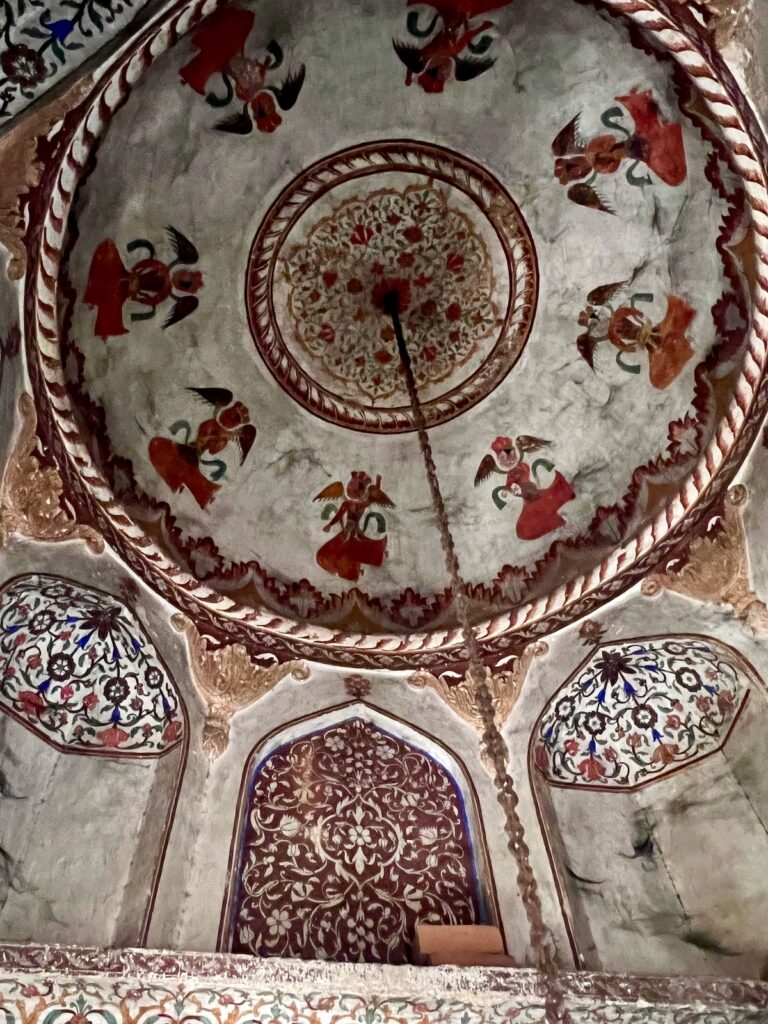
Frescoes inside a temple
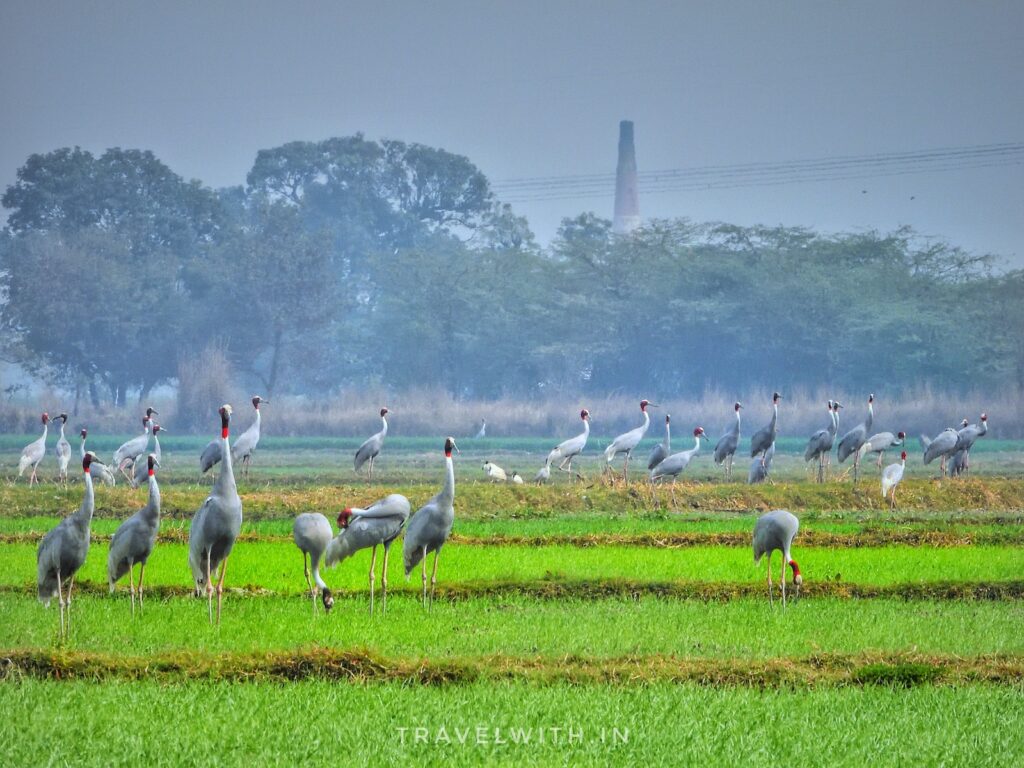
Hundreds of Sarus Cranes in a wetland near Agra
Birdwatching in and around Agra
Ideal time for birdwatching in the Agra region is from October to March. It is during this time that the region sees an influx of migratory birds. There are several smaller and lesser known bird sanctuaries within a couple of hours drive from the city that we can take you to. Patna Bird Sanctuary, Kheetam, Jodhpur Jhal, Nibhi Lake near Dholpur to name a few. Then there is the famous Keoladeo National Park or Bharatpur Bird Sanctuary which is close to Fatehpur Sikri and enroute Jaipur. Visit this link if you are keen to spot wildlife and go birdwatching with Agra as your base.
Agra Heritage Walks, Colonial Walk and Handicraft Workshops
If you’re into street photography or like to explore old markets then we recommend a walking tour of old Agra. You can also cover some of the lesser known monuments if you have more time in Agra. These include, Itmad-ud-daulah, Mehtabh Bagh, lesser known monuments on the Yamuna riverfront, Sikandra and Fatehpur Sikri (including the Mesolithic period rock cave paintings near Fatehpur Sikri). If you’re interested in Agra’s rich colonial history then a guided tour can be arranged to show you St. John’s College, the fascinating Roman Catholic Cemetery which also has the red Taj Mahal, churches and cathedrals etc.
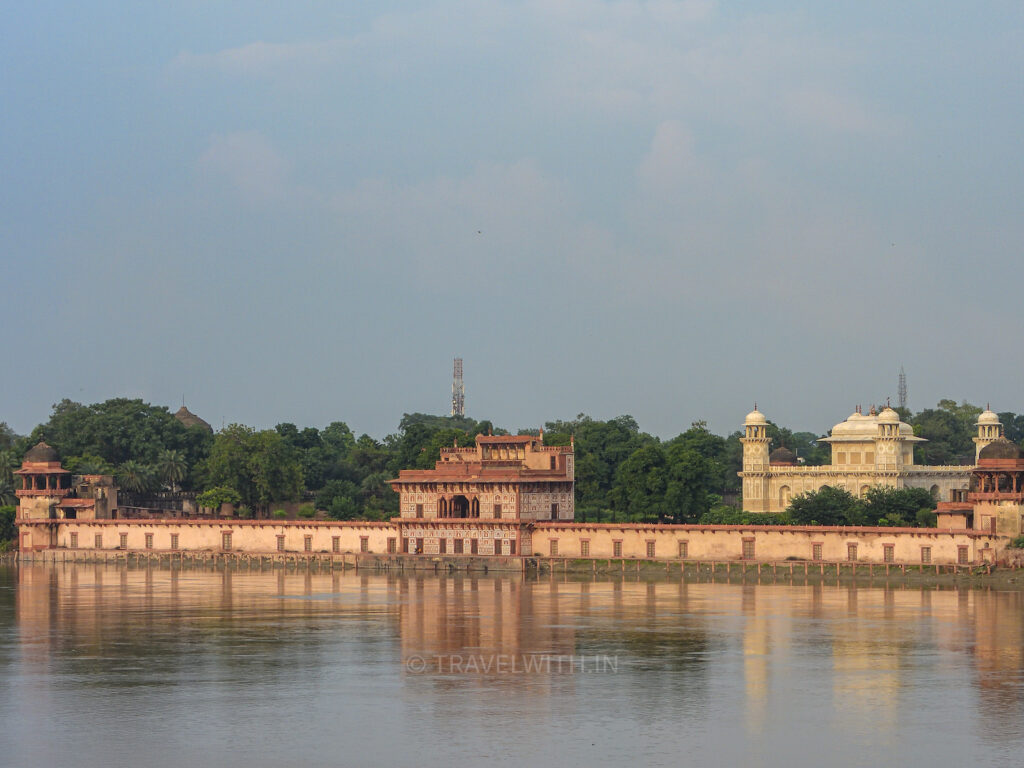
Itmad-ud-daulah aka Baby Taj
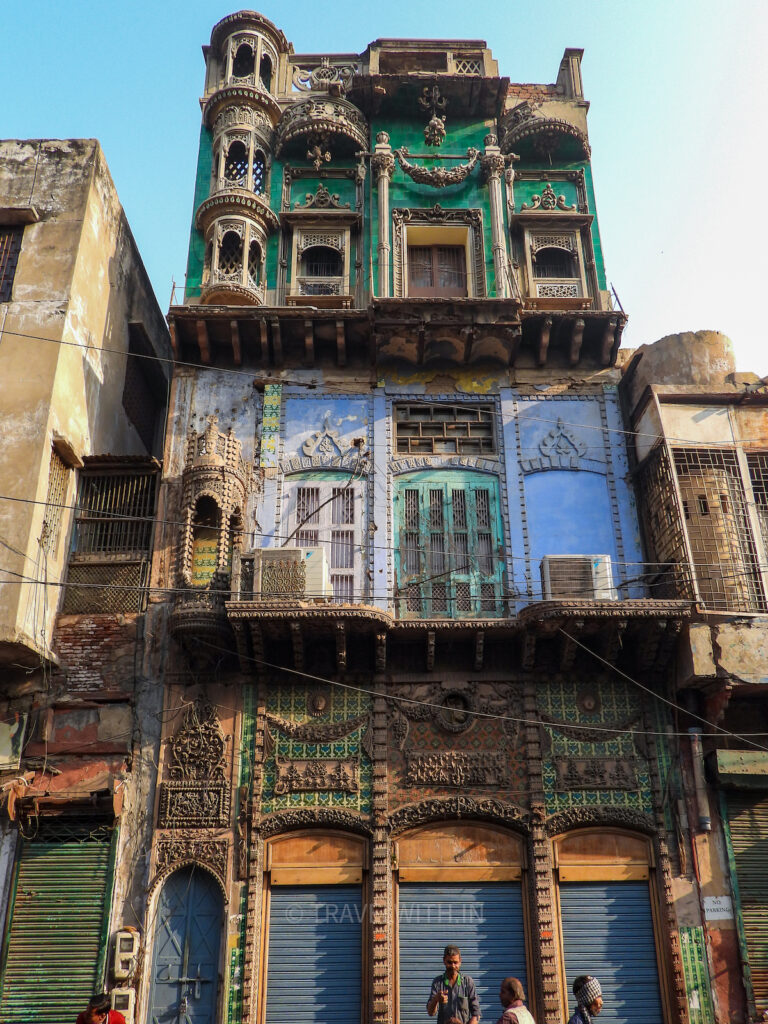
Old city Agra Heritage Walk
Old city walks are generally best done in the mornings when it’s least crowded and walks can be curated based on your interest – street, food, architecture, bazars, traditional handicrafts etc. Walks are lead by friendly knowledgeable locals who have a strong connect with the city. Some of the locals who lead these walks have lived here their entire life, others have come back after quitting their corporate jobs. One thing common in all these individuals is that they’re passionate about what they do and possess in-depth knowledge of the area they’re walking you through.
We can also take you to see how pietra dura (marble inlay) is done similar to the workmanship that you see in the Mughal era monuments. If you want to get hands-on then we can arrange a workshop on Zardosi, the art of high-end embroidery introduced by the Persians in the 16th century. Back in the day this form of embroidery used gold and silver wires and precious gems and found itself in carpets, curtains to clothes and footwear.
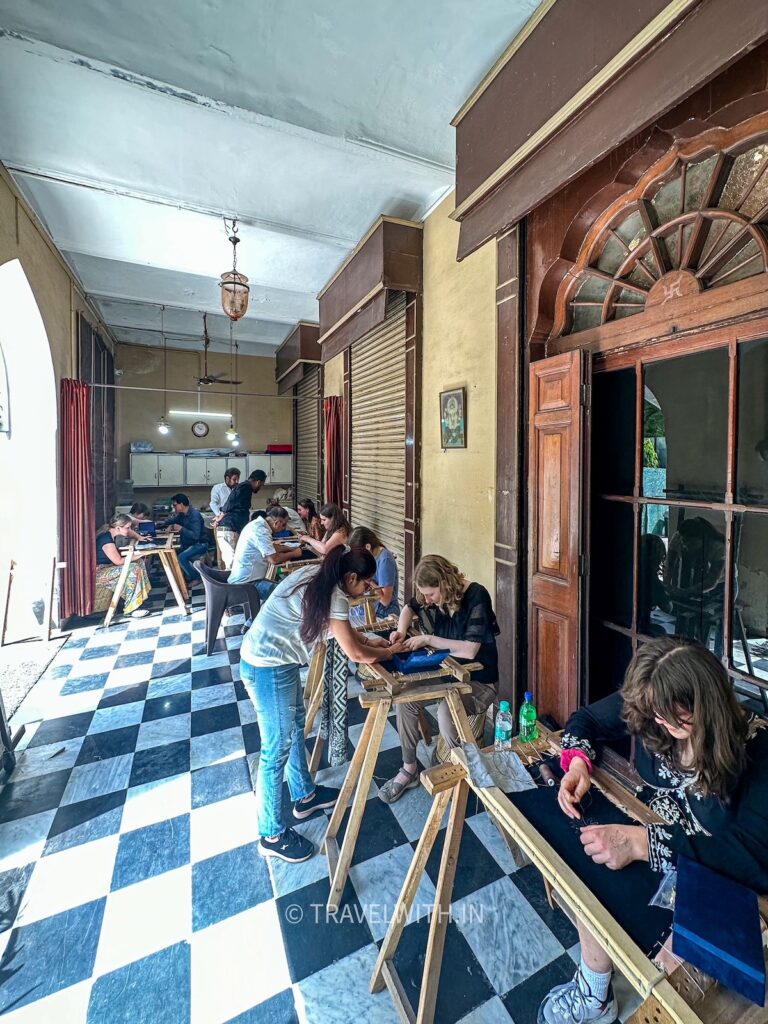
Hands-on Zardosi Workshop in Agra
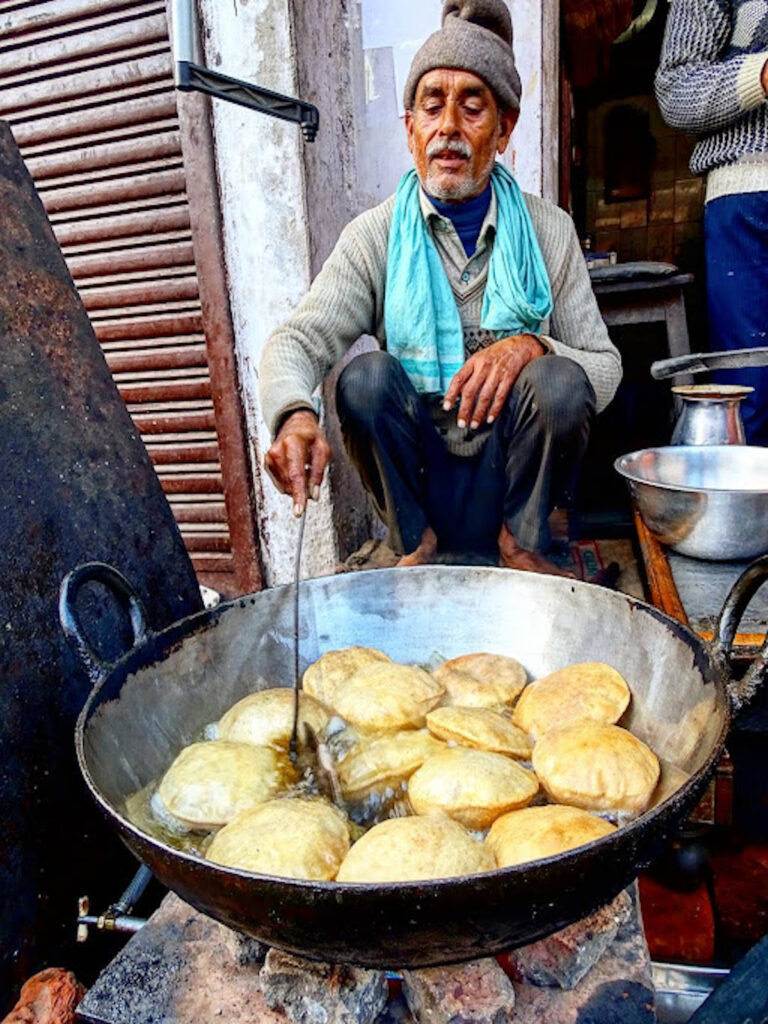
Aloo Bedvi – Agra’s most popular street food
Some of the locals who lead these walks have lived here their entire life, others have come back after quitting their corporate jobs. One thing common in all these individuals is that they’re passionate about what they do and possess in-depth knowledge of the area they’re walking you through.
Please Note:
• There is no guarantee that you will see the above wildlife. The river and / or sanctuary is their habitat and sightings depend on water level in the river, human interference, weather conditions, migratory pattern of birds, most of which are beyond your and my control. We will do our best to show you all there is to see.
• What to carry: camera, binoculars, warm jacket (in the winter), backpack, sun glasses, cap, vizer, sun block, some cash, drinking water, snacks and food
• Smoking and drinking alcohol is not permitted in National Parks and Wildlife Sanctuaries including the Chambal river.
• Please do not throw trash on the floor even if you don’t see a trash can. Please ask your guide or naturalist to help you to dispose it off properly.
• During all our tours we do not feed, bait or disturb the wildlife we see and we expect our guests to do the same.



